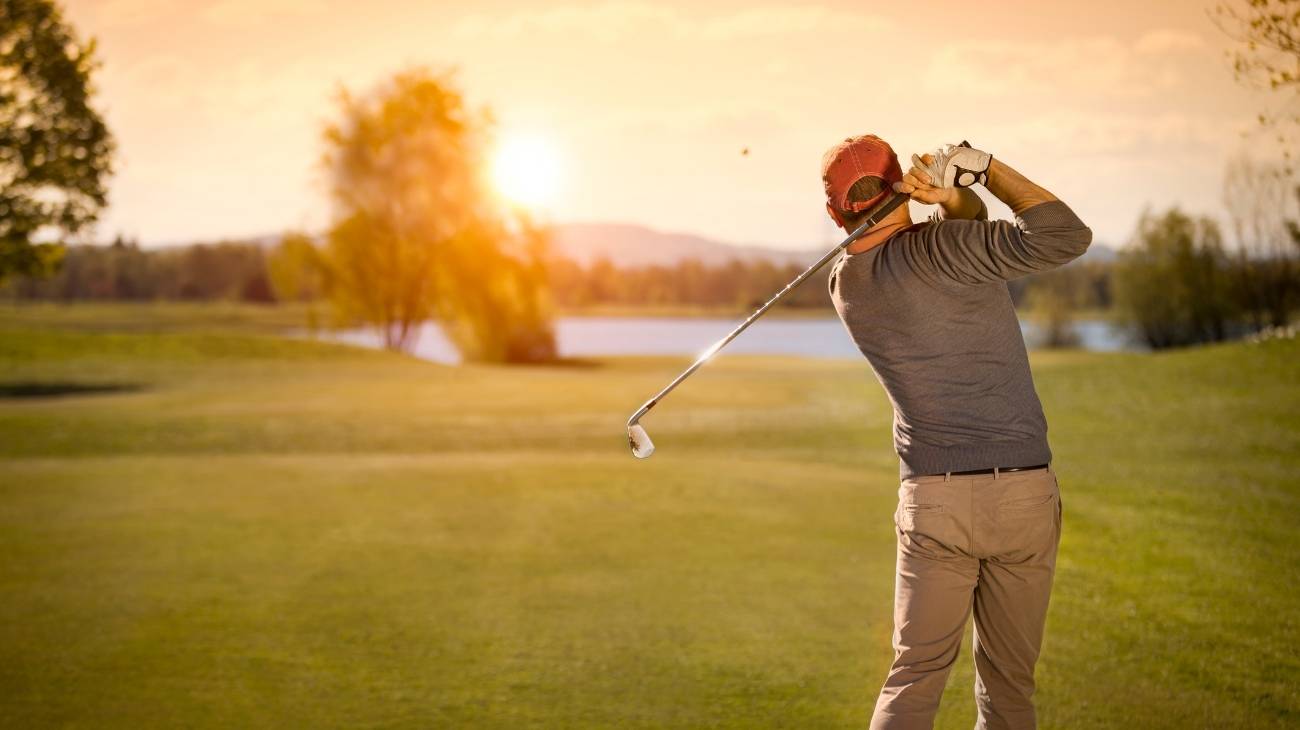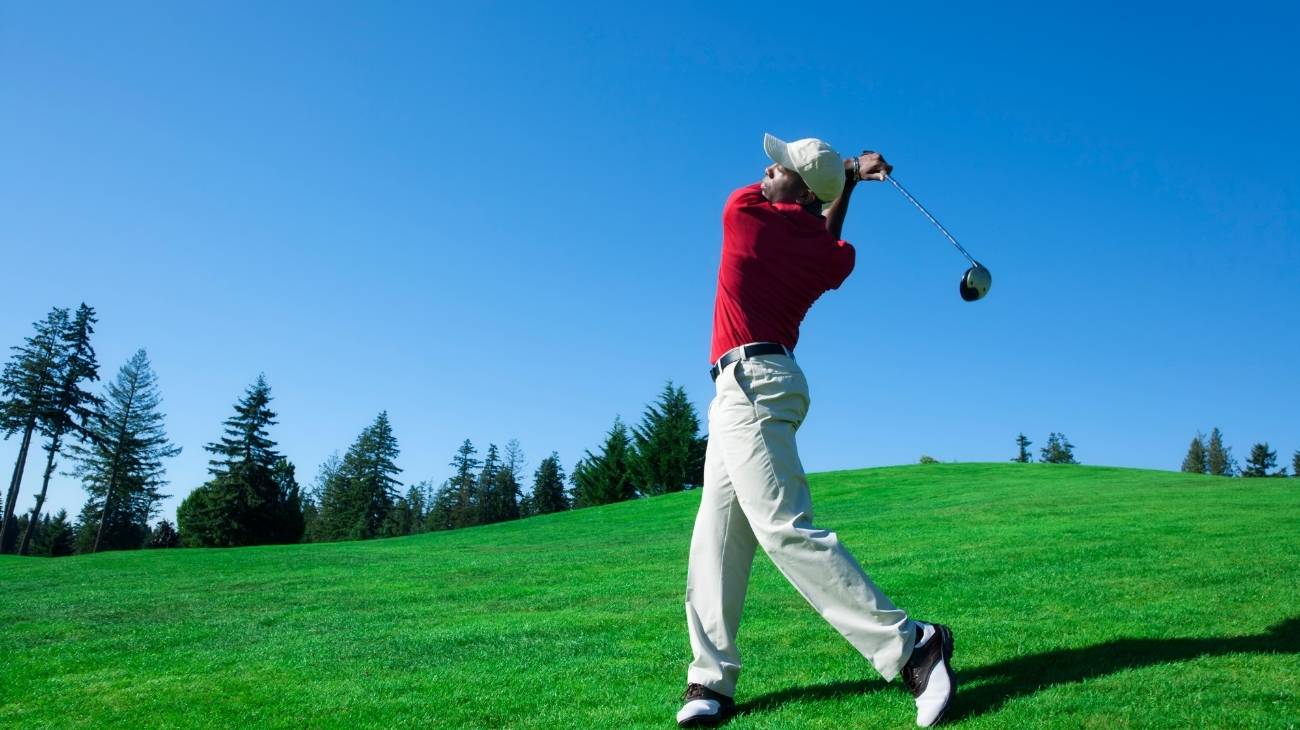Severe stress on the knee can take any golfer out of physical activity. In 2008, Tiger Woods suffered a torn anterior cruciate ligament due to the stress placed on his knee during his swing.
Whether for degenerative reasons or joint overload, knee joint injuries are common when playing golf. Find out the list of the most common knee injuries in golfers, how to apply the PRICE therapy and which are the best products on the market if you want a better recovery.
What are the most common types of knee injuries when playing golf?
Golf is a game for both amateurs who play on weekends and professionals who make a living from prizes, sponsorship and advertising. But that doesn't mean it's without risk, so it's important to know this list of the most common knee injuries when playing golf.
Anterior cruciate ligament injury
This is the most important ligament in the knee because it provides stability and cushions the constant movement of the joint. It is the most common injury in the sporting world, shared by golfers, footballers and basketball players.
In addition to bearing weight, this ligament supports the strong twisting of the player in attempts to hit a long drive. If the shot is hit on uneven ground, the twisting of the knee will not be what it is used to and this is when the likelihood of injury increases. Watch for inflammatory processes in the knee, deformities, pain when walking or rotating the joint, and feelings of instability.
Knee arthritis
Knee arthritis is a process of "erosion" of the knee cartilage that covers the bones and prevents unpleasant friction. As the cartilage is worn down, it becomes inflamed and loses its ability to provide smooth movement.
It is also an injury caused by twisting of the knee during ball strikes. Remember that in a single match there can be more than 70 shots over 18 holes. This injury is more common in veteran golfers who have spent years applying swing technique and have already suffered injuries such as torn ligaments.
Arthritis is a kind of final consequence in players whose wear and tear is advanced. It is best to reduce the intensity and frequency of play, so that golf is not in your day-to-day life to the detriment of your quality of life.
Meniscal tears
The most likely cause of injury is caused by constant and excessive rotation of the knee. Remember that all golf injuries occur in the brief moments of a swing, so your technique must be perfect if you want to lower the chance of injury.
When there are tears in the meniscus, there is no longer an option to cushion shock and movement between tissue and bone. In the case of golf, the player's swing generates particular pressure on the posterior horn of the inner meniscus, rather than the outer meniscus.
Cartilage fissure
Even though all parts of the joint are perfectly fitted together, a fragment of cartilage can become detached after a crack. The function of the cartilage is to support and distribute the pressure exerted on the knee to prevent the concentration of energy from creating a breaking point. The only natural flaw in cartilage is that it cannot repair itself.
A cartilage crack is caused by the overwork involved in the sudden movement of a swing, so do not over-stress the blow because it has long-term consequences. In this injury, the joint becomes inflamed and there is severe pain that limits the natural movement of the knee.
Lateralisation of the patella
There is a combination that is fatal in the presentation of this injury: muscle fatigue and excessive rotation of the femur. When we talk about a lateralisation it is actually a mild slippage or dislocation of the patella as a result of an aggressive swing with poor technique. When the bone moves slightly out of place, this tends to injure the ligaments that support it and we are then talking about a complex discomfort, with several points to address for a speedy recovery.
If the injury is not treated in time, the cartilage of the kneecap may wear down and the golfer's recovery will definitely be slower. After attacking the ailment with drugs, there is a phase of physiotherapy that will make the joint stronger and more resistant to possible relapses.
Knee bursitis
Bursae are fluid-filled sacs located at various points in the knee, and although any of them can become inflamed, one in particular suffers more because it is on the inside of the joint. An injured bursa becomes inflamed and causes severe pain that prevents free movement in the joint.
The function of the bursa is to cushion the blows, friction and intense movements that the knee endures, such as a golfer's swing. As in the previous cases, the force exerted in the blows must be managed. You may gradually feel pain and discomfort, so it will not be sudden. You should watch for any indication that something is wrong with your ball striking.
Best products for recovery from knee injuries in golf
Bestseller
-
Microwave Wheat Bag for Back Pain Relief (Extra Large) (Hearts)
£24,95 -
Microwave Wheat Bag for Back Pain Relief (Extra Large) (Oxford)
£24,95 -
Microwave Wheat Bag for Back Pain Relief (Extra Large) (Sport)
£24,95 -
Microwaveable Wheat Bag for Pain Relief (Hearts)
£20,95 -
Microwaveable Wheat Bag for Pain Relief (Oxford)
£20,95 -
Microwaveable Wheat Bag for Pain Relief (Sport)
£20,95 -
Wheat Bag for Microwave Classic Bottle Shaped (Hearts)
£20,95 -
Wheat Bag for Microwave Classic Bottle Shaped (Oxford)
£20,95 -
Wheat Bag for Microwave Classic Bottle Shaped (Sport)
£20,95
How to apply the RICE therapy to treat knee injuries in golfers?
RICE is an acronym that summarises a series of steps to follow to apply first aid to injured soft tissues. This therapy should always be used for minor injuries. The method has been updated and should now be referred to as PRICE which describes the following steps:
- Protection: Find a place where you can lie down and calmly check the injured knee and avoid at all costs that it receives a blow that worsens the injury.
- Rest: Avoid moving the knee or twisting the knee leg to walk until you know the extent of the injury. Knowing this, rest may be relative, and you may be able to make slight movements if your specialist allows it.
- Ice: The function of ice is to prevent a complication by regulating swelling, pain and redness of the injured part of the knee. The blood supply is reduced, and this promotes better recovery.
- Compression: Use an elastic bandage or compression knee brace to control swelling. If it hurts too much, don't use it as it may be a fracture.
- Elevation: Use a pillow to raise your leg above the level of your heart while lying or sitting. This allows gravity to limit the amount of blood that reaches it.
References
- Baker, M. L., Epari, D. R., Lorenzetti, S., Sayers, M., Boutellier, U., & Taylor, W. R. (2017). Risk factors for knee injury in golf: A systematic review. Sports Medicine, 47, 2621-2639. https://link.springer.com/article/10.1007/s40279-017-0780-5
- Guten, G. N. (1996). Knee injuries in golf. Clinics in sports medicine, 15(1), 111-128. https://europepmc.org/article/med/8903712
- Marshall, R. N., & McNair, P. J. (2013). Biomechanical risk factors and mechanisms of knee injury in golfers. Sports biomechanics, 12(3), 221-230. https://www.tandfonline.com/doi/abs/10.1080/14763141.2013.767371
- Gosheger, G., Liem, D., Ludwig, K., Greshake, O., & Winkelmann, W. (2003). Injuries and overuse syndromes in golf. The American journal of sports medicine, 31(3), 438-443. https://journals.sagepub.com/doi/abs/10.1177/03635465030310031901
- Kanwar, K. D., Cannon, J., Nichols, D. L., Salem, G. J., & Mann, M. D. (2021). Injury risk-factor differences between two golf swing styles: a biomechanical analysis of the lumbar spine, hip and knee. Sports Biomechanics, 1-22. https://www.tandfonline.com/doi/abs/10.1080/14763141.2021.1945672
- Parziale, J. R., & Mallon, W. J. (2006). Golf injuries and rehabilitation. Physical Medicine and Rehabilitation Clinics, 17(3), 589-607. https://www.pmr.theclinics.com/article/S1047-9651(06)00028-3/fulltext
- Brandon, B., & Pearce, P. Z. (2009). Training to prevent golf injury. Current sports medicine reports, 8(3), 142-146. https://journals.lww.com/acsm-csmr/Fulltext/2009/05000/Training_to_Prevent_Golf_Injury.00011.aspx
- Fradkin, A. J., Cameron, P. A., & Gabbe, B. J. (2006). Opportunities for prevention of golfing injuries. International journal of injury control and safety promotion, 13(1), 46-48. https://www.tandfonline.com/doi/abs/10.1080/17457300500167693
- Metz, J. P. (1999). Managing golf injuries: technique and equipment changes that aid treatment. The Physician and Sportsmedicine, 27(7), 41-56. https://www.tandfonline.com/doi/abs/10.3810/psm.1999.07.917
- Lehman, G. J. (2006). Resistance training for performance and injury prevention in golf. The Journal of the Canadian Chiropractic Association, 50(1), 27. https://www.ncbi.nlm.nih.gov/pmc/articles/PMC1839980/












































